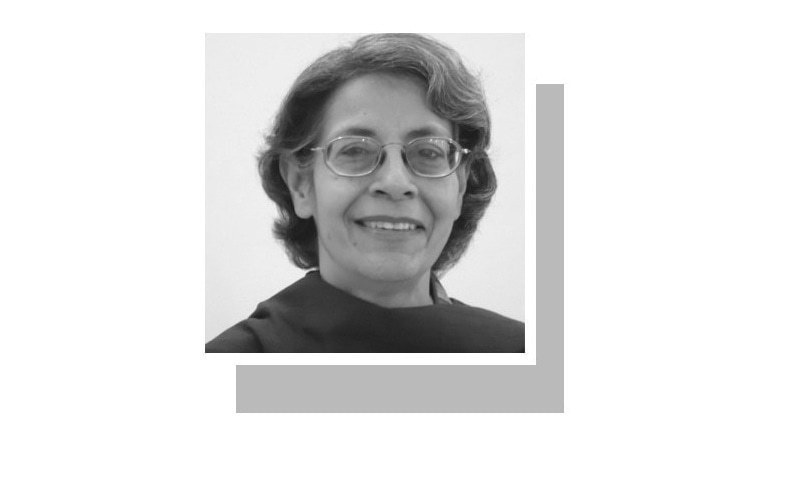A COMMENT by a UK-based friend during a trip was that women in Pakistan were few and far between — a normal state of affairs for those who live here although some of us have noticed women missing from offices, shops, markets, mosques, streets, parks, dhabas or from positions of authority. They are not seen in policymaking fora or foreign delegations. They are missing from schools and the teaching profession.
Globally, societies are assessed through indicators that measure economic aspects, intellectual progress, social conditions, living standards and other factors to determine how human beings fare. The Human Development Index (HDI) is one indicator that measures health, education and income levels in all countries. An adjustment for gender inequality, measuring health, empowerment and labour market for both women and men produces the Gender Inequality Index (GII).
Norway, Ireland and Switzerland are the best ranked in HDI and GII. In South Asia, for both HDI and GII, Sri Lanka is ahead of its neighbours, closely followed by Bangladesh and India. Pakistan is at the lowest level, followed only by Afghanistan.
The World Economic Forum’s Global Gender Gap Report measures the differences between genders in 153 countries across four key factors: economic participation and opportunity; educational attainment; health and survival; and political empowerment. Iceland, Norway and Finland top the list. South Asia lags behind the rest of the world. Bangladesh has the lowest gender gap. Pakistan has the highest, along with Afghanistan.
In terms of gender parity, we are among the worst.
GDP per capita measures the total economic production of a country by population. The US, China and Japan have the highest GDP. In South Asia, Sri Lanka heads the list; Bangladesh is ahead of India. Pakistan, Nepal and Afghanistan have the lowest GDP.
Another factor is the development of peace. The Institute of Economics and Peace has had an annual report since 2008 ranking nations and regions by measuring levels of peace. A combination of 20 parameters that include internal and external conflicts, relations with neighbours, refugees, criminality, jailed persons, violent crime and military expenditure as a percentage of GDP are measured. Among the most peaceful are Iceland and New Zealand; Somalia and Syria are the most violent. In South Asia, once again, Afghanistan comes at the bottom along with Pakistan. Bhutan and Sri Lanka are the most peaceful in this region.
The Georgetown Institute for Women, Peace and Security reports on sustainable peace as a measure of inclusion, justice and security for women. This index (WPSI) captures the inclusion of women in the economic, social and political arenas, equality in laws and informal systems and safety in their homes and environment. The indicator is linked with the SDGs, specifically relating to education, peace and reducing conflict and preventable deaths.
It is evident that armed conflicts lead to violence against women and discriminatory laws and practices reduce their agency as productive human beings and increase the risk of harm to their physical, mental and intellectual well-being. Along with greed, grievances and fragility of governance, gender inequality also promotes armed conflict and strengthens patriarchal cultures and recruitment of youth for violent action. Countries with a higher WPSI tend to have more youth in schools. Once again, Afghanistan and Pakistan fare the worst in South Asia. In Pakistan, only seven per cent of women hold a financial account as compared to 39pc of men while most men believe that women should not earn an income.
We can conclude that social and economic development is directly linked to increased gender parity and involvement of women in economic activities. Education, health and free will for women are crucial for human progress and long-term peace. Pakistan continues to show poor performance in all related indicators.
Discussions with women across Pakistan showed that they view peace not as the absence of armed conflict, but as a linked system of social networks, safety for children and women, free mobility, protection of rights, inclusion and safety in decision-making. This is a far cry from a society which calls for men-led jirgas, prevents women from voting or travelling to banks to handle their finances and subjects them to forced marriages. Women are invisible on decision-making platforms and their voices are often silenced or not heard. Many apologists present examples of women who work as diplomats or politicians, but the problem is that these are exceptions. Women need to make their mark in all fields in sufficient numbers in order for countries to develop peacefully and sustainably.
An example of the invisibility of women in our society is a statement in Urdu on the wall of a supermarket in Karachi: “During this Ramazan, let us resolve not to let any brother go hungry.” The sisters, of course, do not exist, or can go hungry.
The writer is a freelance contributor.
Published in Dawn, May 7th, 2021











































